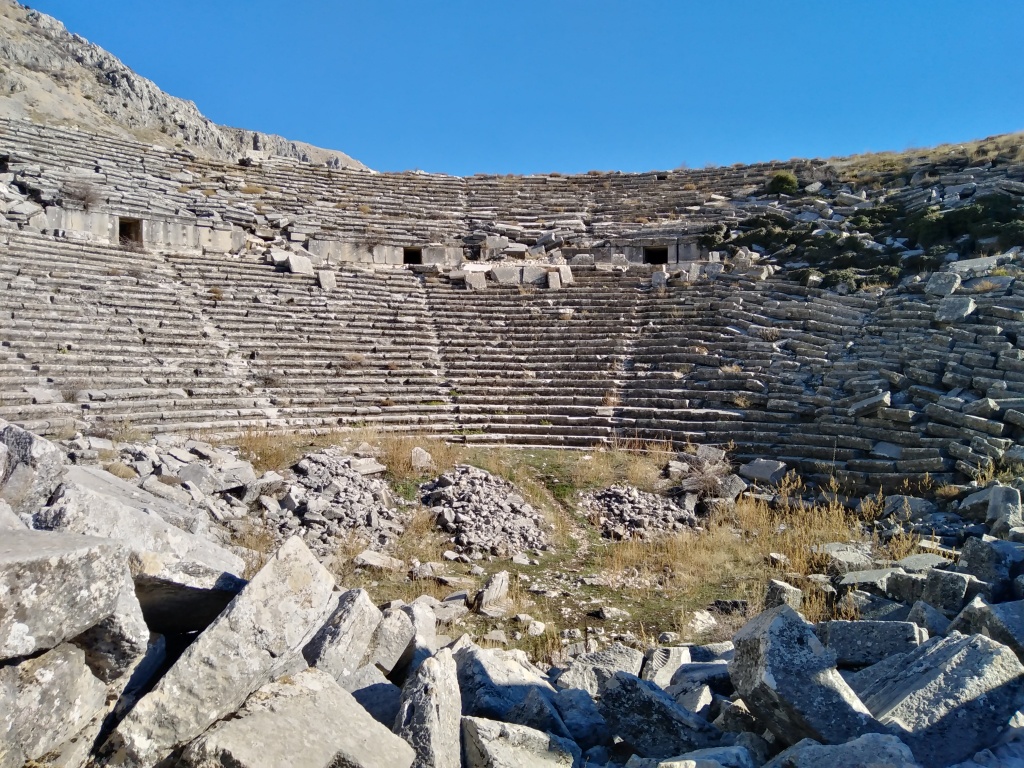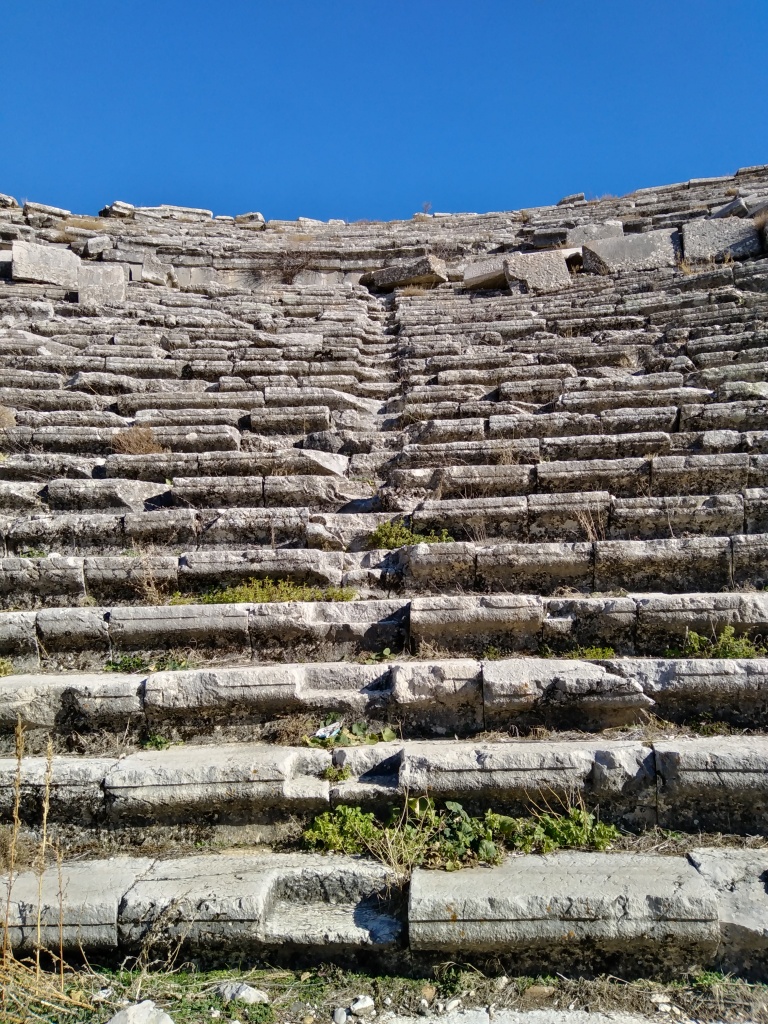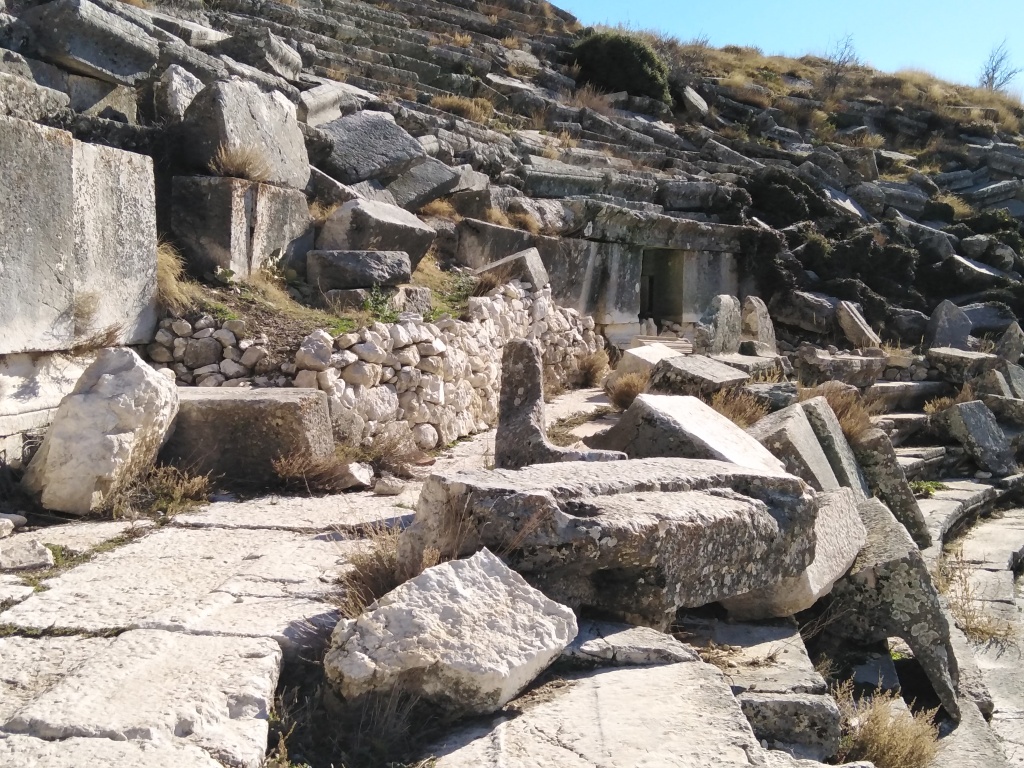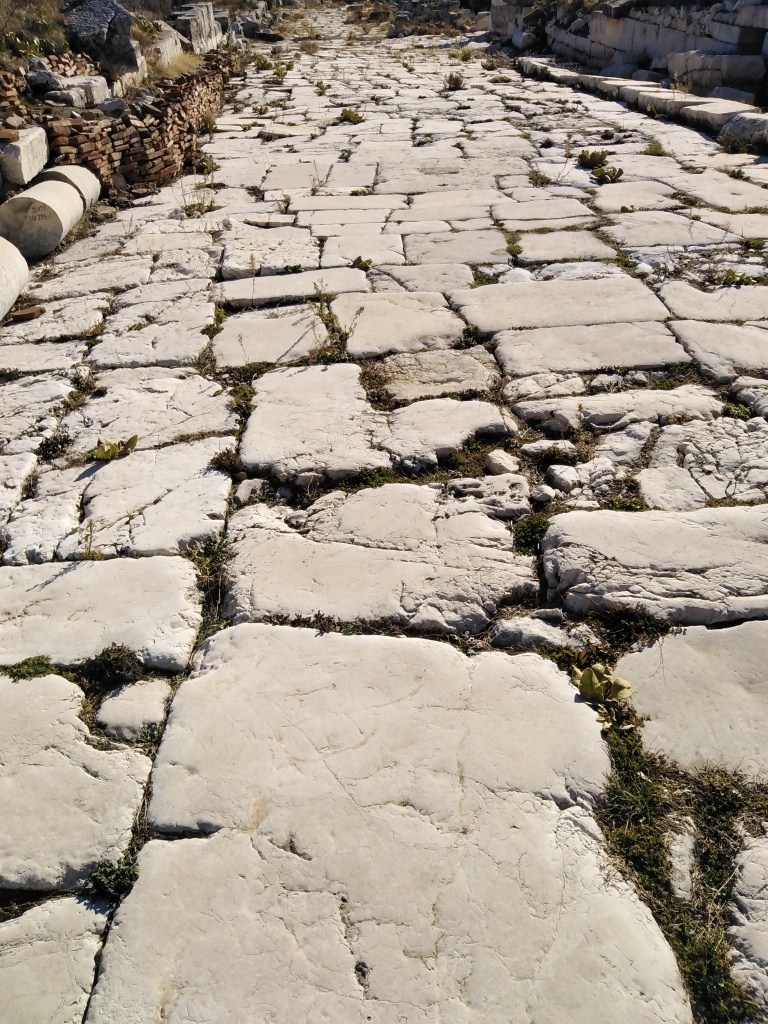After a good night’s rest, I said goodbye to Egirder and headed west towards Isparta and Sagalassos, some 70 km away. The road was fraught with police checkpoints, having been stopped 3 times in as many days. Making my way through the village of Aglasun, whose roads were atrocious and winding skyward to the site, at some 1700 meters altitude, I arrived.






Having been recently excavated and restored, Sagolassos had a lot to see but was a little more “polished” than Antioch Pisidia. This is the result when UNESCO gets involved; they spend a bunch of money, hire archaeologists, who then undoubtedly recreate the ancient location into their “own” image or interpretation. I have seen some terrible examples of this, namely at Knossos in Crete and Teotihuacan, Mexico. Thankfully this site was not completely remodeled and some of its true “essence” survived. Owing to its altitude and seclusion, the local village below (7km) didn’t siphon off all of the stone blocks to build their homes.
Conquered by Alexander the Great in 333 BC, where a nearby mountain still bears his name, Sagalassos had a population of a few thousand inhabitants. After Alexander’s death, a whole slew of rulers stepped in through the years from Thrace, Syria and Pergamon.
Finally the Romans took over (25BC) under Hadrian, turning Sagalassos into a “first city” and began to build the structures that still stand to this day. Earthquakes, plagues and Islamic incursions brought an end to the city proper in the 7th century with only defended fortified hamlets until the 13th century.
The city has an upper and lower section, made up of an (1) Agora, (3) Nymphaum, Amphitheater, several churches and (Temple-8) Heroon. There are also some shrines to Zeus, Apollo Klarios (9) and a lower nymphaeum (9).
The views and vistas of the Tarsus mountains were fantastic. I made my way to the Nymphaeum which was basically a fancy fountain. Graced with a colonnaded Corinthian facade of medusa heads and statues, this was one of the main sources of water for the city. In fact, it’s the only currently working fountain I have seen in the Roman world, thanks to a Belgium refurbishment in the 1990’s. Copious amounts of water filled a rectangle basin, adjacent to the upper Agora. Remnants of statues (all replicas) adorned the niches of the Nymphaum, flanked by 20 meter high doric columns. A stone squared plaza outlined the market area.








Circling back past the Herloon, which was rectangle and about 15 by 10 meters and was supposedly dedicated to an unknown hero, I made my way to the imposing theater. It was situated on a hillside, facing south. Having been destroyed by earthquake in the 6th century, this mammoth structure hosted some 9000 spectators who watched plays, music and political dissertations.
The theater was in fairly good shape, considering its age. Like all theaters it afforded masterful views of the mountains and hills, scanning the horizon for hundreds of kilometers. Multi-ton building stones or reclining seats were jumbled about like pebbles on the beach. The stage area lay in tatters. However, it seemed 75%of the bench seating were in their millennium old stance, waiting for the next performance. As I sat relaxing in the sun, I listened for the bygone sounds of the crowd, hawkers selling snacks and the music of antiquity playing long forgotten tunes. I pondered and wondered: “what was the last show performed in this theater?”
Continuing on, I retraced my steps above the upper Agora, towards the Necropolis and stadium. The necropolis was chiseled into the side of the mountain, just outside the city gates. Faded Greek lettering lined the small tombs, their contents having been pilfered eons ago. The sun blanketed the grey hue stone, an ancient rock bench for the past bereaved afforded me some comfort in enjoying the sumptuous mountain views.




Just below the necropolis were the remains of the stadium, once hallowed for its gladiatorial contests, chariot races and wrestling matches. Christian sacrifices also took place, replete with Martyr churches. It seems, when Christianity was finally adopted by the Empire, the Bishopric purposefully erected churches on the location of their Martyrs demise. This would often include the stadiums where their fate was sealed by wild animals or the sword. Nothing remained of the stadium except for a faint circular outline, the fallen church walls barely standing. Stone quarries, still in use today, could be seen down in the canyon below.





It was about 3 pm. I had started my tour around 11am, so I was starting to get a little fatigued, having walked for about 4 kms in the high altitude sun. I made my way to the lower Agora, which included the Roman baths, Apollo Klaros and city gates. The lower Agora had another Nymphaem, although not in working order. Market stalls, former restaurants and drinking establishments lined the stone plaza. The temple of Apollo Klaros was where sacrifices took place in honor of the son of Zeus. Inside ancient soothsayers would foretell the future, for a price, to journeying pilgrims.
Adjoining the Agora were the Roman baths, ubiquitous in roman cities worldwide. Red brick arches, ceramic heating pipes and large sunken baths are trademarks in any ancient roman town. Always constructed to impress, this roman bath had a mosaic floor, meters high arches and multiple rooms of hot and cold water, exercise and lounging areas. Gravel and a plastic tarp covered the mosaic in order to protect it from the elements.
Directly south, along another stone lined road was the southern gate of the city. Alexander hill was directly beyond. This was the hill where the city made a last stand versus the invading Macedonians, only to be destroyed. The gates were surrounded by the crumbling Byzantine city walls, whose defense was impotent against the raiding Arabs in the 6th century.




By now the Sun was quickly descending into late afternoon and twilight would soon follow. Needing to find accommodation for the night, I hustled back to my vehicle, took one last glorious glance at the view and drove onto the town of Burdur, some 40 kms away.












Good update. You need to get a YouTube channel and supplement your blog posts with travel videos. Deliver some of the Jensen charisma …
Awesome travelog! Great photos and great writing… Like the other reply said, a video channel would be cool too, but words are worth a thousand pictures… Keep the updates coming. Be well, stay safe, and have fun.. – Frizzy